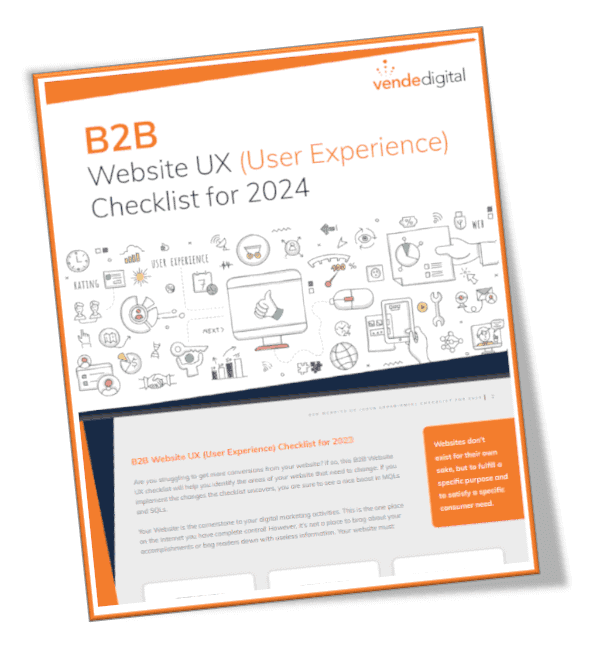In this age of multiple screens, multi-channel marketing is a fact of life. As businesses communicating with customers, we need to understand the challenges and benefits of multi-channel marketing and tailor our strategies accordingly. Vende Digital realizes that this is an important conversation and want to share our top 4 Reasons To Launch a Multi-Channel Strategy.
Bottom line, we have seen multi-channel work. We have observed overall diminishing costs both in spend and in average CPC with the introduction of additional tactics. In one example, with only a 10% increase in spend month over month, we were able to increase traffic 55% and saw a 67% increase in leads.
Bottom of the funnel ONLY tactics are expensive and have limited exposure to customers.
Paid Search has been the workhorse for many businesses because it allows advertisers to go after a “buyer-initiated” customer who is actively researching and in the market for a product or service. It also offers a low barrier to entry and controllable costs. This may seem attractive; however, this is also where competitors spend heavily resulting in higher cost per click charges over time. It is also a bottom of the funnel only tactic, which means there are lots of potential customers who won’t get exposure to companies unless they type in a purchased key phrase.
While paid search is still a critical component of the marketing mix, we believe that you, as a brand, need to be engaging with your prospects and future customers at all phases of the funnel and on multiple devices. Today, the average adult uses four-and-a-half connected devices to access the Internet. They also spend 97% of their time online on sites other than search engines. As businesses communicating with customers, it’s imperative that we tailor our marketing strategies accordingly.
Reason #1 – Your users are interacting beyond Search. Don’t you want to be where they are?
Today customers are spending most of their time on social media, watching YouTube videos, and reading articles. A multi-channel strategy allows businesses to gain exposure and build trust by presenting messages to targeted buyers in these active channels. The key here is targeting. Advertisers can zero in on their audience with pinpoint accuracy. Examples include geography, gender, age, income, homeowner, etc. Paid search only offers exposure to individuals in a search engine who type in selected words. This is a much smaller audience. Additionally, if a brand isn’t well recognized to the buyer, showing up in a search result doesn’t guarantee a conversion. Upper funnel exposure in sites like Facebook and YouTube can improve paid search conversion rates for this reason.
Reason #2 – Not all of your customers react the same way to messaging. Multi-channel allows you to offer a variety of messages.
It’s hard to communicate a USP with paid search since it is text-based and has a limited character count. However, in search results, the goal is to get a buyer to click and transact. It’s much more of a “We have what you are looking for” channel and therefore, isn’t really the place to communicate USP. However, for advertisers that aren’t well known, communicating USP and building trust are critical for online success. If the first time a potential buyer is hearing about your brand is when they click on a search ad, you are probably not going to win the sale.
Different types of messages work better over different channels. Facebook is excellent for top of the funnel awareness building. YouTube is a great place for USP messaging, as well as educating, and informing the buyer. Display and remarketing are also very good reinforcers of key messages.
Reason #3 – Users need to see the message multiple times before typically interacting.
Our brains can ignore or discard many marketing messages. A strategic campaign build will allow your message to be seen across multiple channels, multiple times as the campaign needs dictate. Repeating a message via different channels is much more effective than repeating it via a single channel. Understanding this concept solidifies the need for a cohesive plan that leverages a variety of distribution methods – Social, Search, Video, Mobile and Display. Put differently, multi-channel tactics take into consideration the various phases of the funnel. From tip of spear awareness tactics such as social media, video, mid-funnel-mobile, display keyword targeting, to end-of-funnel-remarketing and paid search, a blend of tactics allows you to reach users in all phases of decision making.
Reason #4 – Teamwork Makes the Dreamwork. No really.
AKA: Multi-Channel Cohorts
Sometimes the whole is worth more than the sum of its parts. When using multiple channels in ways that complement and support each other, individual campaigns can generate better than expected results. This is why we strongly recommend a multi-channel campaign approach – to be able to optimize against the entire program to get to your goals, as opposed to a solitary tactic. We might see higher conversions in remarketing and/or search; however, we know that we can expand the audience by layering in awareness campaigns to fill the top of the funnel. Blended attribution allows you to look at the performance of ALL the campaigns as opposed to looking at each one in a silo.
Making Multi-Channel Marketing Work: Targeted messaging
Thanks to the abundance of channels and choices facing customers, delivering the message isn’t enough. Messaging must be tailored to the audience’s preferences and take into consideration demographic, behavioral and transactional history, preferred channel and current location. Engaging customers this way will ensure that they not only receive your message, but are also attentive, receptive and willing to act – regardless of the channel.
Clear Lines of Attribution
It is critical to work with your agency partners as well as your tech team to ensure that your website and analytics are structured in a way to give credit to the variety of tactics that drive interaction and conversions to your organization. Gone are the days of singular last-click attribution that worked so well with a search only strategy. With the emergence of multi-channel campaigns, Vende recommends that a multi-position attribution model should be used to give credit to all campaigns driving to client acquisition.
Well Planned Campaigns
One of the keys to successful multi-channel customer marketing is managing all channels in a coordinated way that is designed to meet the needs of your business. We do not believe in a one-size-fits-all marketing campaign construction. No business is the same. Nor do we believe that there is a singular strategy that works for all. Instead, we will work with your team to determine your goals – understand the costs of new client acquisition and then develop a program with the right tactics layered in to meet your goals.
Customers are everywhere, and you should always aim to be where your customers are. In addition, customers today have much more control over the buying process than marketers do. As businesses communicating with customers, you need to understand the challenges and benefits of multi-channel marketing and tailor our strategies accordingly. Hopefully these insights and best practices will help you consider and implement a successful multi-channel digital approach for your business.
If you are already implementing multi-channel, that’s terrific! Please share what’s working and what’s not in the comments below.

